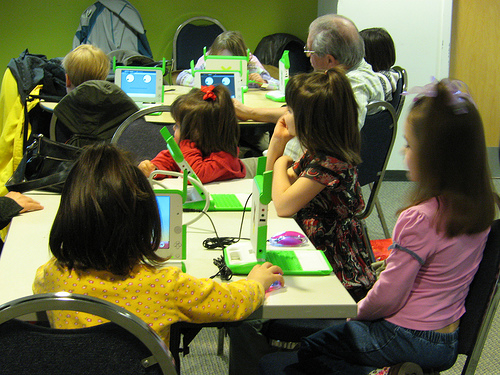Questions Every School Administrator Should Ask Before Investing in a Technology Solution
“Integrating technology throughout a school system is, in itself, significant systemic reform. We have a wealth of evidence attesting to the importance of leadership in implementing and sustaining systemic reform in schools. It is critical, therefore, that we attend seriously to leadership for technology in schools.” – Don Knezek, Director of the Technology Standards for School Administrators (TSSA) Collaborative
While technology can often be a positive so urce for increased efficiency and productivity in schools, today’s administrators are faced with a barrage of options to choose from. Making the wrong choice when it comes to technology can not only be expensive but result in many hours of work invested for little gain – or worse.
urce for increased efficiency and productivity in schools, today’s administrators are faced with a barrage of options to choose from. Making the wrong choice when it comes to technology can not only be expensive but result in many hours of work invested for little gain – or worse.
Below is a list of fundamental questions each school administrator should consider before investing precious human and financial resources in implementing a technology solution:
What benefits – in time, money, efficiency — are we seeking to gain from implementing this solution?
All too often, organizations will invest in a solution because of a misplaced notion that “they have to” or “everyone else is.” If a solution ultimately doesn’t save you time, reduce expenses or increase efficiency – is it really worth it?
How much will it cost to implement? What is our return on investment?
In today’s economy, schools are more concerned than ever with managing their finances. When evaluating cost, school administrators should look not only at how much it costs to purchase a technology solution but the related implementation and on-going costs of training, support, upgrades, etc.
How well does this solution integrate with our current system and our school’s culture?
A school district invests hundreds of thousands of dollars in a state of the art PC-based computer lab only to find that a majority of students and faculty own Macs. Doing a thorough analysis and survey of what technology and systems are currently used can help schools avoid implementing solutions that ultimately end up collecting dust in a corner. After all, a solution is only as good as how well and how often it is used. In addition to evaluating the effectiveness and usage of technology systems, infrastructures and standards that are currently in place on campus, administrators should also consider what technologies and standards are being used by teachers, students, parents and other stakeholders outside of school.
Is this solution scalable and can it meet future needs?
Implementing a new technology solution takes time, money and resources – so it is important to make sure that you invest in a solution that not only meets current requirements but can easily be scaled or adapted to meet future needs. Costs for additional licensing, ease of customization, additional modules, etc. are all elements that should be considered when evaluating a solution’s scalability.
Photo by http://www.flickr.com/photos/curiouslee/ / CC BY 2.0
Tech Director Saves District $1 Million
 Steve Young, a chief technology officer at the Judson school district used a brilliant networking technique to provide 2,283 additional computer seats with 781 CPUs, and saved the district over $1 million.
Steve Young, a chief technology officer at the Judson school district used a brilliant networking technique to provide 2,283 additional computer seats with 781 CPUs, and saved the district over $1 million.
According to TechLearning.com:
The NComputing x300 solution that Young used is a modified thin client that virtualizes the host OS and shares the host’s resources. It is installed via a PCI card into the host machine, and up to three terminals can be connected to each PCI card. Young decided to focus NComputing x300 deployment into three areas: elementary schools, middle schools and library student stations.
So basically Young setup four computer stations for each Windows PC or Mac (the article doesn’t specify which one Young used). This is a great idea that could save many schools a lot of money if it was widely implemented. Not only does it save money in hardware costs, but Young was also able to cut energy costs per seat by 73%! Judson ISD was one of the first districts in the nation to receive the CoSN’s Green Computing Certification.
To learn more see:
Judson ISD Green Computing Initiative
Photo by izzymunchted